Geographic Distribution and Subspecies
Snub-nosed monkeys are endemic to Asia and are found in scattered, isolated populations in China (including Tibet) and Vietnam. The dense human population in these regions, particularly in eastern Sichuan and the Han River valley of southern Shaanxi, has resulted in geographic isolation between the various subspecies.
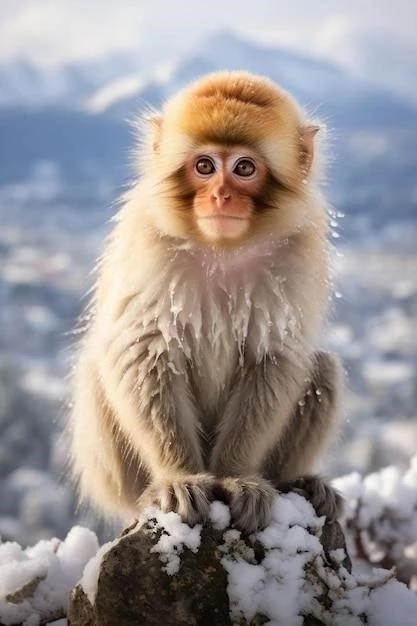
Physical Characteristics
Snub-nosed monkeys (Genus Rhinopithecus) are instantly recognizable for their unusual facial features, which lend them an almost comical appearance. Their most distinctive trait is their namesake “snub nose,” characterized by forward-facing nostrils and a flat, upturned muzzle. This unique nasal structure is particularly pronounced in adult males and is thought to play a role in vocalizations.
These primates are considered some of the largest and most robust among the odd-nosed monkeys of Asia, with adults ranging in size from 51 to 83 cm (20-33 inches) in body length. Their tails, often as long as their bodies, contribute to their overall size and are essential for balance as they navigate their arboreal habitat. Sexual dimorphism is evident in most species, with males typically larger than females.
Snub-nosed monkeys exhibit a striking range of coloration, which varies across the different species. The golden snub-nosed monkey (Rhinopithecus roxellana), for instance, boasts a luxurious coat of golden-orange fur, particularly vibrant on their backs and manes. In contrast, the Tonkin snub-nosed monkey (Rhinopithecus avunculus) sports a striking black and white pelage, accentuated by pink facial skin and distinctive blue patches around their eyes.
Adapting to life in high-altitude forests, these monkeys possess several physical adaptations for survival in cold climates. Their thick, dense fur provides insulation against frigid temperatures, while their relatively large body size aids in heat conservation. Furthermore, their hands and feet are remarkably dexterous, featuring strong digits tipped with sharp claws. This anatomical advantage allows them to expertly grasp branches and move confidently through the treetops, even in icy conditions.

Habitat and Diet
Snub-nosed monkeys inhabit a specialized ecological niche, restricted to high-altitude, temperate forests in China and Vietnam. These forests, characterized by coniferous and broadleaf trees, provide both sustenance and shelter for these arboreal primates. Their range often extends into mountainous terrain, with some species, like the golden snub-nosed monkey (Rhinopithecus roxellana), found at elevations exceeding 3,000 meters (9,800 feet). These challenging environments, subject to seasonal extremes in temperature and precipitation, have shaped the monkeys’ adaptations for survival.
As highly specialized herbivores, snub-nosed monkeys primarily consume a diet of lichens, leaves, fruits, and seeds. Lichens, a symbiotic partnership between fungi and algae, constitute a significant portion of their diet, particularly during the winter months when other food sources are scarce. These primates possess specialized digestive systems capable of breaking down the complex carbohydrates found in lichens, allowing them to extract vital nutrients. Their foraging behavior often involves stripping bark from trees to access lichens, leaving distinctive feeding traces in their wake.
The availability and composition of their diet fluctuate with the changing seasons. During the warmer months, snub-nosed monkeys supplement their lichen intake with a diverse array of leaves, buds, fruits, and seeds. This dietary shift reflects the seasonal abundance of these food items and provides them with essential vitamins and minerals. As highly social animals, they forage in groups, moving through the forest canopy and exploiting different food sources as they become available.
The dietary specialization of snub-nosed monkeys highlights their ecological role as seed dispersers within their unique habitat. As they consume fruit, they inadvertently ingest seeds, which are then deposited elsewhere in their droppings. This process facilitates forest regeneration and contributes to the overall health and biodiversity of their high-altitude ecosystems.
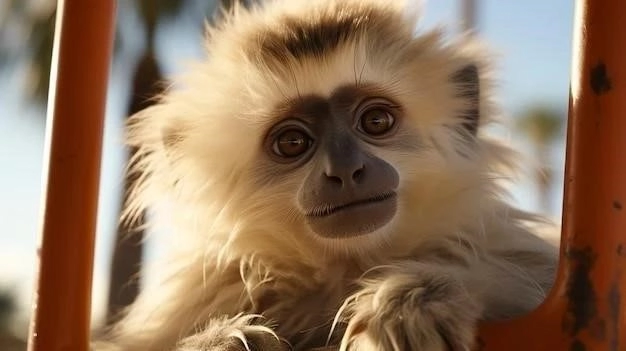
Social Structure and Behavior
Snub-nosed monkeys are highly social animals, living in structured groups called multilevel societies (MLSs) that exhibit a complex social hierarchy. These MLSs can range in size from a few individuals to several hundred, with group dynamics influenced by factors like food availability, habitat structure, and the presence of predators.
At the heart of each MLS are several smaller units known as one-male units (OMUs). An OMU typically consists of a single adult male, several adult females, and their offspring. The adult male within an OMU acts as the dominant leader, responsible for defending the group’s territory, mediating conflicts, and ensuring access to resources. Females within an OMU often form close social bonds, cooperating in raising young and foraging for food.
Multiple OMUs come together to form a band, creating a larger social network within the MLS. Bands often engage in communal activities, such as foraging and resting, and may cooperate in defending their shared territory against rival bands. The composition of bands can be fluid, with individuals moving between them based on factors like kinship, social alliances, or environmental conditions.
Communication plays a vital role in maintaining social cohesion within snub-nosed monkey societies. These primates utilize a diverse repertoire of vocalizations, including calls, barks, grunts, and screams, to convey a wide range of information. Vocal signals are used to alert others to the presence of food or predators, express dominance or submission, strengthen social bonds, and maintain contact during foraging expeditions.
Within their social groups, snub-nosed monkeys exhibit a range of fascinating behaviors, from playful interactions and grooming rituals to aggressive displays and territorial defense. Young monkeys engage in energetic play, honing their social skills and physical dexterity, while adults strengthen social bonds through allogrooming, meticulously picking through each other’s fur to remove parasites and dirt.
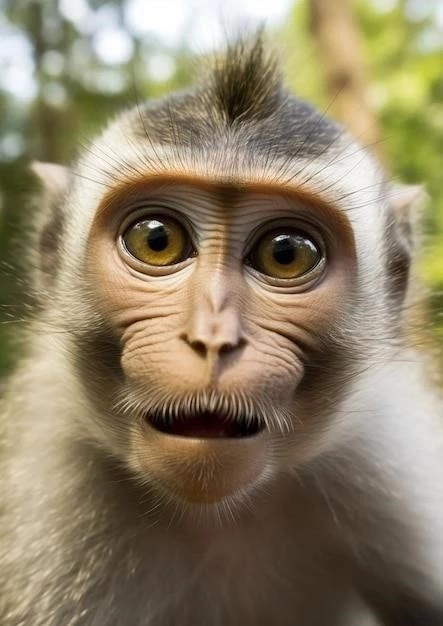
Threats to Survival
Snub-nosed monkeys, facing a multitude of threats, are classified as endangered or critically endangered, with their populations dwindling across their limited range. These primates, highly specialized to their high-altitude forest ecosystems, are particularly vulnerable to anthropogenic pressures and environmental changes that disrupt their delicate balance.
Habitat loss and fragmentation stand as the most pressing threats to snub-nosed monkey survival. Expanding human populations, driven by agricultural expansion, infrastructure development (like roads and dams), and resource extraction (such as logging and mining), encroach upon these primates’ habitat. This encroachment not only reduces the total area available for them to live but also isolates populations, making them more susceptible to localized extinctions and hindering genetic exchange.
Hunting and poaching pose additional, direct threats to snub-nosed monkey populations. While these primates receive legal protection in all range countries, enforcement can be challenging in remote, mountainous regions. They are targeted for their meat, considered a delicacy in some cultures, and for use in traditional medicine. Even low levels of hunting pressure can have devastating impacts on their already fragmented and reduced populations, particularly as they have slow reproductive rates.
Climate change exacerbates the threats faced by snub-nosed monkeys, acting as a “threat multiplier.” Rising temperatures can cause shifts in the distribution and abundance of key food resources, like lichens and bamboo, upon which these monkeys rely. Additionally, climate change is projected to alter precipitation patterns, potentially increasing the frequency and severity of droughts or extreme weather events, further stressing these vulnerable primate populations.

Habitat Loss and Fragmentation
Habitat loss and fragmentation present the most formidable challenges to the continued survival of snub-nosed monkeys. These primates are confined to shrinking and increasingly isolated patches of their preferred high-altitude forest ecosystems, driven by a complex interplay of anthropogenic factors that are transforming their world.
Agricultural expansion stands as a primary driver of habitat loss throughout the snub-nosed monkey’s range. As human populations grow and demand for food increases, forests are cleared for agriculture, often through slash-and-burn practices that decimate large areas of primate habitat. The conversion of forested land to cropland or pastureland not only removes vital food sources and shelter but also disrupts the ecological processes upon which these monkeys depend.
Infrastructure development further fragments and degrades snub-nosed monkey habitat. The construction of roads, dams, pipelines, and other infrastructure projects often necessitates clearing large swaths of forest, creating barriers to movement and isolating primate populations. Roads, in particular, can have a disproportionate impact, facilitating further encroachment into previously inaccessible areas, increasing hunting pressure, and exposing monkeys to the risk of vehicle collisions.
Resource extraction, including logging and mining, poses additional threats to snub-nosed monkey habitat. Logging, both legal and illegal, removes mature trees crucial for food and shelter and degrades forest structure, making it less suitable for these arboreal primates. Mining operations, often associated with deforestation and pollution, can contaminate water sources, damage sensitive ecosystems, and displace wildlife, including snub-nosed monkeys.
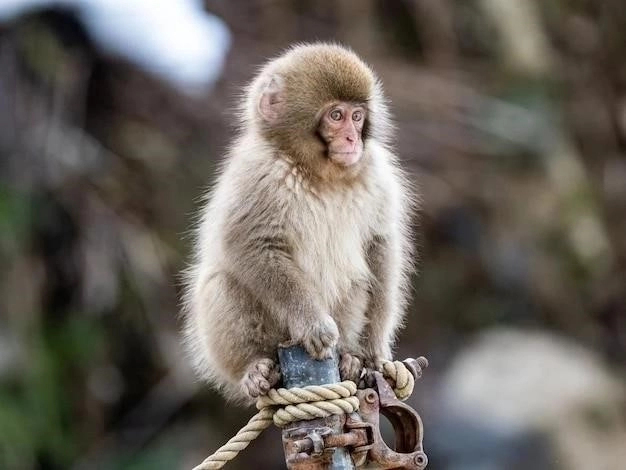
Hunting and Poaching
While habitat loss poses the most significant threat to the survival of snub-nosed monkeys, hunting and poaching represent an insidious and persistent pressure on these endangered primates. Despite legal protections in place throughout their range, these monkeys continue to be targeted, often driven by cultural beliefs, economic incentives, and inadequate enforcement of wildlife protection laws.
In certain regions, snub-nosed monkeys are hunted for their meat, which is considered a delicacy or a source of protein. This bushmeat trade, often fueled by local consumption or demand from urban centers, can decimate primate populations, particularly in areas where law enforcement is weak or where alternative sources of protein are limited. The hunting of these monkeys, often opportunistic and indiscriminate, can disrupt social groups, impact reproductive rates, and lead to localized extinctions.
Traditional medicine practices pose an additional threat to snub-nosed monkeys. Certain body parts, such as bones, organs, and fur, are believed to possess medicinal properties in some cultures. This demand for primate parts fuels the illegal wildlife trade, incentivizing poachers to target these endangered animals. The capture or killing of individuals for these purposes not only directly reduces populations but can also disrupt social structures and gene flow within and among populations.
The illegal pet trade, though less prevalent than bushmeat hunting or traditional medicine use, still poses a threat to snub-nosed monkeys. Their unique appearance and charismatic nature make them appealing targets for the exotic pet trade. Infants are particularly sought after, often captured after their mothers are killed. This trade, often operating through complex and clandestine networks, subjects these primates to cruel treatment and inhumane conditions during capture, transport, and captivity.
Conservation Efforts
Recognizing the precarious status of snub-nosed monkeys, conservationists, researchers, and governments have initiated multifaceted efforts to protect these endangered primates and the fragile ecosystems they inhabit. These initiatives encompass a range of strategies, from habitat preservation and anti-poaching patrols to community engagement and education programs.
Establishing and managing protected areas form a cornerstone of snub-nosed monkey conservation. Across their range, national parks and nature reserves have been created to safeguard crucial habitat and mitigate threats. These protected areas, often patrolled by rangers to deter illegal activities, provide a safe haven for these primates and other wildlife, allowing populations to recover and thrive.
Addressing the threat of poaching and illegal wildlife trade requires a multi-pronged approach. Strengthening law enforcement efforts, both within protected areas and along trade routes, is essential to deterring poachers and dismantling trafficking networks. This includes increasing patrol frequency, improving surveillance techniques, and imposing stricter penalties for wildlife crimes. Raising public awareness about the plight of snub-nosed monkeys and the devastating impacts of the illegal wildlife trade is crucial for garnering support for conservation actions and reducing demand for primate parts.
Engaging local communities living in and around snub-nosed monkey habitat is paramount to long-term conservation success. This engagement involves implementing sustainable livelihood programs that provide alternative income sources and reduce reliance on activities that degrade primate habitat. Promoting eco-tourism initiatives, where communities benefit economically from protecting snub-nosed monkeys and their habitat, can foster a sense of stewardship and provide incentives for conservation.
Research and monitoring are vital components of conservation efforts, providing valuable data to inform management decisions. Researchers study snub-nosed monkey ecology, behavior, and population dynamics to better understand their habitat requirements, assess threats, and evaluate the effectiveness of conservation interventions. This information guides the development and implementation of targeted strategies to ensure the long-term survival of these unique primates.
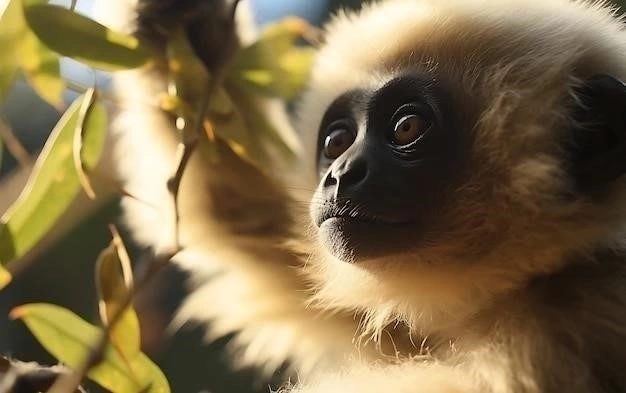
The Future of Snub-Nosed Monkeys
The future of snub-nosed monkeys hangs precariously in the balance, their fate intertwined with the complex interplay of human actions and environmental changes sweeping across their limited range. While these unique primates face formidable challenges, a glimmer of hope emerges from the dedicated efforts of conservationists, researchers, and communities working tirelessly to safeguard their future.
Despite ongoing conservation efforts, the threats to snub-nosed monkeys remain substantial. Habitat loss continues unabated in many regions, driven by relentless human population growth, agricultural expansion, and infrastructure development. Climate change casts a long shadow, amplifying existing threats and introducing new uncertainties. As temperatures rise and precipitation patterns shift, the delicate ecological balance upon which these primates depend becomes increasingly precarious.
The persistence of hunting and poaching, fueled by cultural traditions, economic disparities, and inadequate law enforcement, continues to decimate populations and undermine conservation efforts. The illegal wildlife trade, operating across international borders, preys upon these endangered animals, driven by demand for their meat, body parts, and even as pets.
Yet, amidst these challenges, rays of hope pierce the gloom. The establishment and effective management of protected areas offer safe havens for snub-nosed monkeys, allowing populations to stabilize and, in some cases, recover. Increased awareness of their plight, both within their range countries and internationally, has galvanized support for conservation efforts, leading to stronger legislation, enhanced enforcement, and increased funding for research and protection programs.
The long-term survival of snub-nosed monkeys hinges on a fundamental shift in the relationship between humans and nature. Addressing the root causes of habitat loss, mitigating the impacts of climate change, and eradicating the illegal wildlife trade are essential steps towards securing a future for these remarkable primates. The fate of these charismatic monkeys rests not only on the efforts of conservationists but also on the choices made by governments, communities, and individuals around the world.










